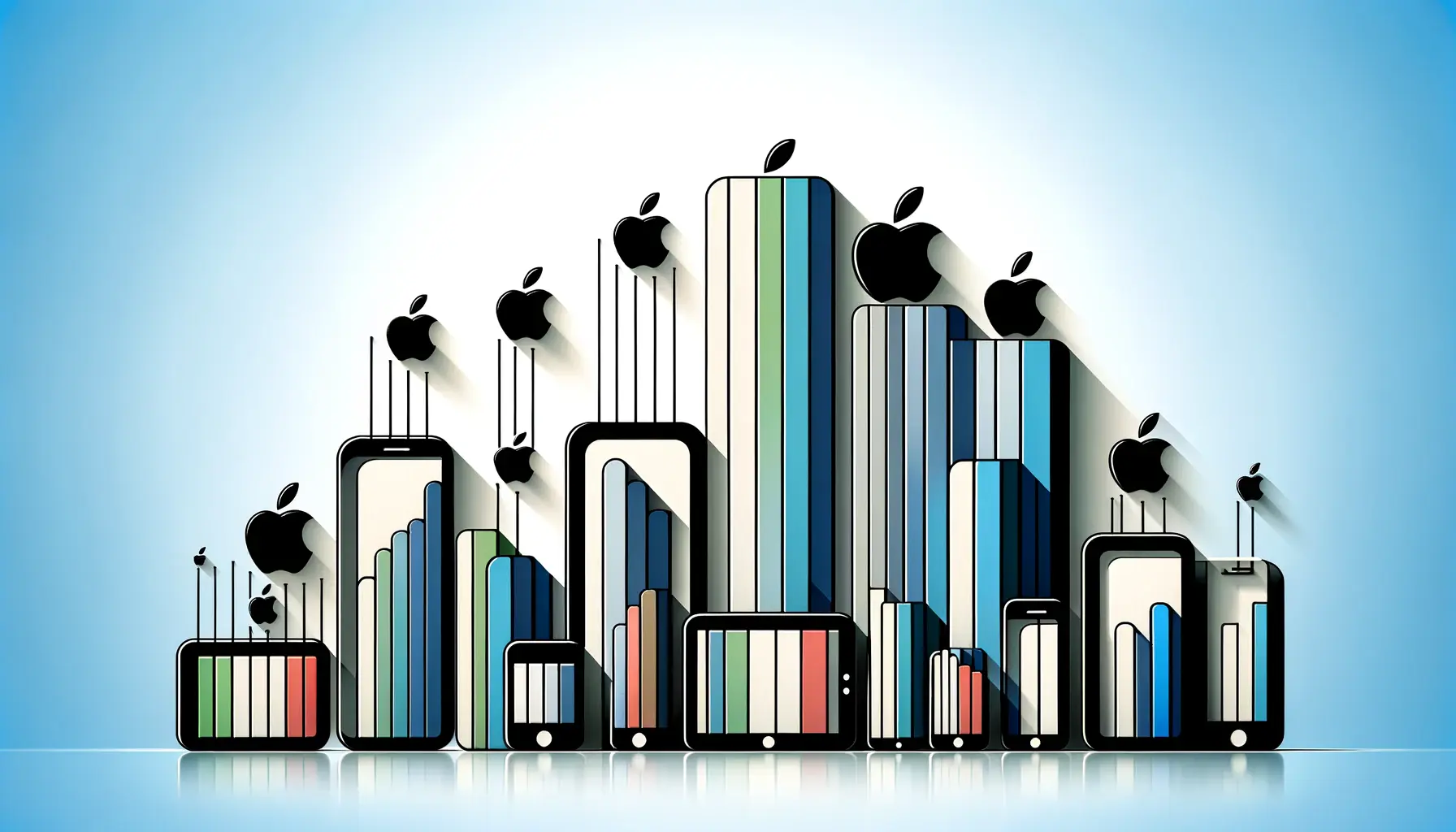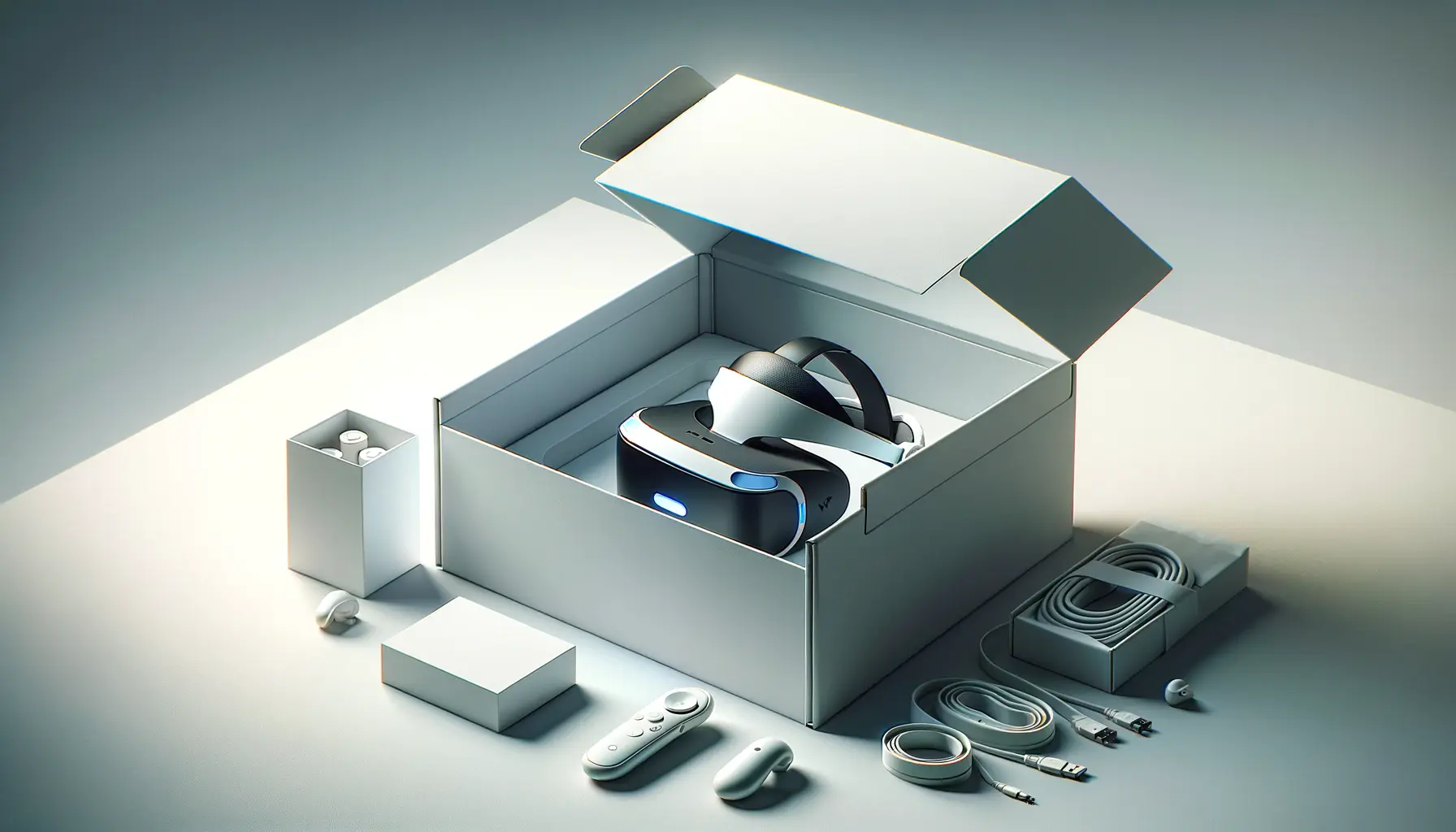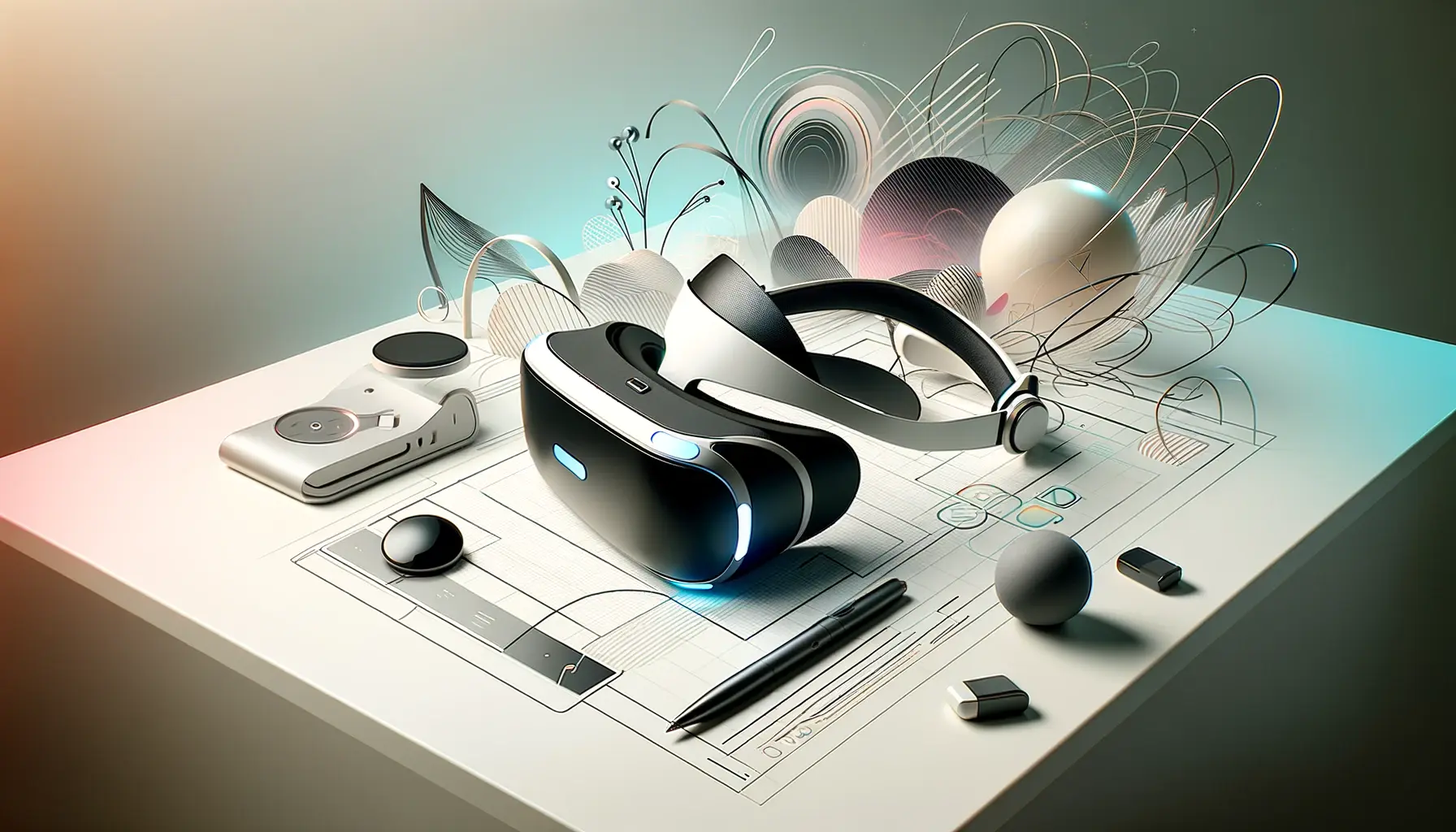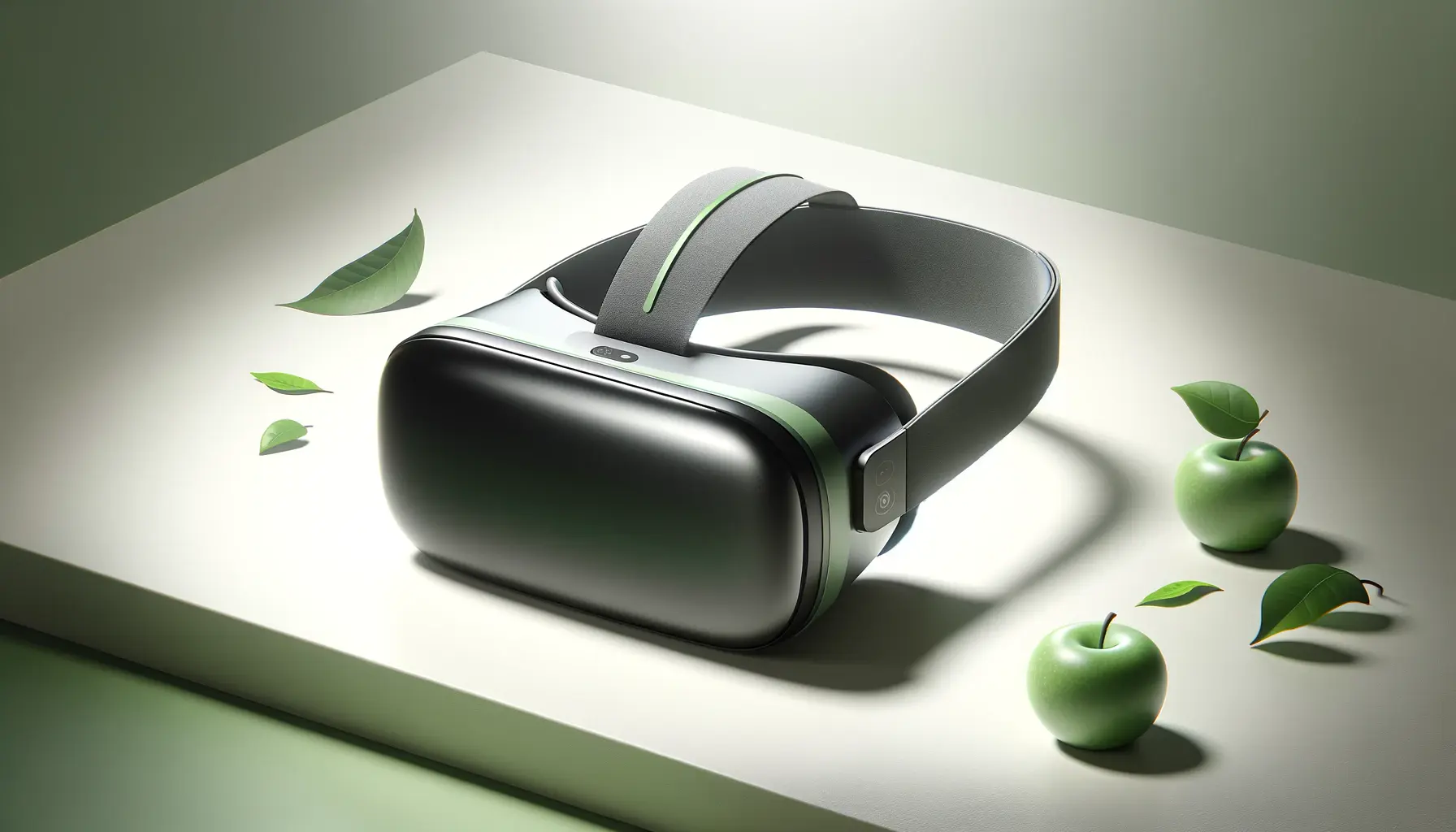The unveiling of Apple Vision Pro marks a significant leap in the realm of spatial computing, blending the physical with the digital in ways previously confined to the imaginations of science fiction writers.
This innovative device, emerging from the tech giant’s relentless pursuit of merging technology with human experience, represents not just a new product but a new way of interacting with our digital environment.
The Apple Vision Pro, with its cutting-edge technology, promises to redefine our perceptions of virtual and augmented reality, setting a new standard for immersive experiences.
At the heart of the Apple Vision Pro’s allure is its learning curve, a critical aspect that determines its accessibility and potential for widespread adoption.
Unlike traditional computing devices that often require users to adapt to complex interfaces and commands, the Vision Pro is designed with intuitiveness in mind.
This focus on ease of use is pivotal, as it not only democratizes access to advanced technology but also ensures that the transition to spatial computing is as seamless as possible for users of all ages and backgrounds.
- Understanding the Basics
- Enhancing User Experience with Advanced Features
- Optimizing for Learning and Productivity
- Challenges and Solutions in Adoption
- Future Prospects and Evolution
- Community and Developer Ecosystem
- Enhancing Accessibility and Inclusivity
- Embracing the Future with Apple Vision Pro
- Apple Vision Pro: Frequently Asked Questions
Understanding the Basics
Intuitive Interactions
The Apple Vision Pro introduces users to a fully three-dimensional user interface, controlled through natural and intuitive inputs such as eye movements, hand gestures, and voice commands.
This departure from conventional input methods significantly reduces the initial barrier to entry, allowing users to interact with digital content in a more organic and engaging manner.
The device’s sophisticated eye-tracking technology, for instance, enables users to navigate menus and select options simply by looking at them, while hand gestures facilitate manipulation of virtual objects, offering a tactile dimension to the digital experience.
Such intuitive interactions are not only impressive from a technological standpoint but also crucial for fostering a smooth learning curve.
By leveraging familiar actions and behaviors, the Vision Pro minimizes the need for users to learn new ways of interacting with their devices, thereby accelerating the adoption process.
This approach to design underscores Apple’s commitment to creating technology that enhances, rather than complicates, human life.
Seamless Integration with the Apple Ecosystem
Another factor contributing to the manageable learning curve of the Apple Vision Pro is its seamless integration with the broader Apple ecosystem.
Users familiar with other Apple products will find the transition to Vision Pro relatively straightforward, thanks to the consistent design language and interoperability across devices.
This integration extends to services such as iCloud, Apple Music, and the App Store, allowing users to access their existing libraries and applications within the mixed reality environment of the Vision Pro.
The device’s compatibility with existing Apple services not only enhances its utility but also reduces the learning curve associated with adopting a new technology.
By embedding the Vision Pro within the familiar framework of the Apple ecosystem, users can leverage their existing knowledge and habits, further smoothing the transition to spatial computing.
This strategic approach to product design and ecosystem integration plays a pivotal role in making advanced technology accessible to a broader audience.
The Apple Vision Pro’s intuitive interface and seamless ecosystem integration are key factors in its accessible learning curve, making advanced spatial computing technology more approachable for users worldwide.
Enhancing User Experience with Advanced Features
The Apple Vision Pro is not just a marvel of engineering; it’s a testament to Apple’s commitment to enhancing user experience through advanced features.
These features are designed not only to captivate but also to simplify the learning process, making the technology accessible to users with varying degrees of tech-savviness.
From immersive audio-visual capabilities to personalized settings, the Vision Pro offers a comprehensive suite of functionalities that cater to the needs and preferences of a diverse user base.
Key to the Vision Pro’s appeal is its array of features that elevate the user experience beyond traditional screen-based interactions.
These include:
- Immersive Audio-Visual Experience: The device leverages Apple’s cutting-edge micro-OLED display technology, offering users an unparalleled visual experience with crisp, vibrant colors and deep blacks. Coupled with Spatial Audio, the Vision Pro creates an immersive environment that is as close to reality as digital can get.
- Personalized User Settings: Recognizing the importance of comfort and personalization, the Vision Pro allows users to tailor their experience according to their preferences. From adjustable vision settings to personalized audio profiles, the device ensures that each user enjoys a customized experience that maximizes comfort and engagement.
- Advanced Health and Safety Features: Apple has integrated several health and safety features into the Vision Pro, including EyeSight technology to reduce eye strain and fatigue. These features are indicative of Apple’s holistic approach to technology design, prioritizing user well-being alongside functionality.
Breaking Down the Barriers to Adoption
The integration of these advanced features plays a crucial role in breaking down the barriers to adoption for the Apple Vision Pro.
By offering a device that is not only technologically advanced but also user-friendly and customizable, Apple addresses one of the main challenges facing the adoption of new technology: the fear of a steep learning curve.
The Vision Pro’s intuitive design and personalized settings ensure that users can navigate its features with ease, regardless of their prior experience with similar technologies.
Furthermore, the emphasis on health and safety features reflects Apple’s understanding of the concerns that potential users may have regarding extended use of spatial computing devices.
By proactively addressing these concerns, Apple not only enhances the user experience but also reassures users about the safety of embracing this new form of computing.
The thoughtful integration of advanced features and user-centric design principles in the Apple Vision Pro demonstrates Apple’s commitment to creating technology that is both cutting-edge and accessible, paving the way for broader adoption of spatial computing.
Optimizing for Learning and Productivity
The Apple Vision Pro transcends the boundaries of entertainment and gaming, venturing into the realms of learning and productivity.
This strategic move not only broadens the device’s appeal but also showcases its potential as a tool for education and professional development.
By optimizing the Vision Pro for these applications, Apple taps into a market that values technology as a means to enhance learning outcomes and workplace efficiency.
Central to the Vision Pro’s utility in learning and productivity are its:
- Immersive Educational Applications: Leveraging the mixed reality capabilities, educational apps on the Vision Pro can transport users to historical sites, simulate complex scientific phenomena, or offer hands-on training experiences that are otherwise impossible in a traditional classroom setting.
- Workspace Integration: The device seamlessly integrates with professional workflows, offering features like virtual meeting rooms, 3D design tools, and spatial data visualization. These capabilities make the Vision Pro an invaluable asset for professionals seeking to enhance collaboration and creativity in their work.
Facilitating Seamless Learning Experiences
The immersive educational applications available on the Apple Vision Pro represent a leap forward in digital learning.
By engaging users in interactive, three-dimensional environments, these applications make learning more engaging and effective.
Students can explore the human body in intricate detail, walk through ancient civilizations, or conduct virtual experiments, all within the safe confines of their learning space.
This hands-on approach not only improves retention rates but also makes learning more accessible to individuals with different learning styles.
Moreover, the Vision Pro’s ability to simulate real-world scenarios offers unparalleled opportunities for vocational training and professional development.
Medical students can practice surgical procedures, architects can explore their designs in a three-dimensional space, and engineers can test their prototypes under simulated conditions, enhancing their skills in a risk-free environment.
Enhancing Workplace Productivity
In the professional realm, the Apple Vision Pro’s workspace integration features stand out as a game-changer.
The device’s spatial computing capabilities enable professionals to work in a virtual space that is both expansive and adaptable, free from the physical constraints of traditional offices.
Virtual meeting rooms bring remote teams together, fostering collaboration and camaraderie, while 3D design tools and spatial data visualization offer new perspectives on complex problems, driving innovation and creativity.
The Vision Pro’s multitasking capabilities further enhance productivity, allowing users to manage multiple applications and windows in a spatial environment.
This not only streamlines workflows but also reduces the cognitive load associated with switching between tasks, leading to a more efficient and enjoyable work experience.
By optimizing for learning and productivity, the Apple Vision Pro positions itself as a versatile tool that extends beyond entertainment, offering tangible benefits in educational and professional settings.
Challenges and Solutions in Adoption
While the Apple Vision Pro introduces a revolutionary approach to spatial computing, its adoption is not without challenges.
These hurdles range from the high initial cost to concerns about user privacy and data security.
Understanding these challenges is crucial for both Apple and potential users, as it highlights areas for improvement and sets realistic expectations for the device’s integration into daily life.
Key challenges in the adoption of the Apple Vision Pro include:
- High Cost Barrier: With a premium price tag, the Vision Pro may be out of reach for many consumers and educational institutions, limiting its accessibility and widespread adoption.
- Privacy Concerns: The advanced tracking and data collection capabilities of the Vision Pro raise valid concerns about user privacy and the potential for data misuse.
- Adaptation to New User Interfaces: Despite its intuitive design, some users may find the transition to spatial computing and gesture-based controls challenging, requiring a period of adjustment.
Addressing the Cost Barrier
One of the most significant obstacles to the widespread adoption of the Apple Vision Pro is its high cost.
To address this, Apple could explore various strategies, such as offering financing options, educational discounts, or bundling the device with other Apple products or services.
Additionally, the development of a more affordable model could make spatial computing accessible to a broader audience, fostering greater inclusivity and democratizing access to cutting-edge technology.
Another approach could involve partnerships with educational institutions and businesses to subsidize the cost for students and professionals.
By demonstrating the value of the Vision Pro as a tool for learning and productivity, Apple could encourage these organizations to invest in the technology, thereby facilitating its adoption on a larger scale.
Ensuring Privacy and Security
Privacy concerns are paramount in the digital age, and the Apple Vision Pro’s capabilities necessitate a robust approach to data security.
Apple has a history of prioritizing user privacy, and extending these principles to the Vision Pro is essential.
Implementing end-to-end encryption for data transmission, offering users granular control over their data, and ensuring transparency in data collection and use are critical steps in building trust and addressing privacy concerns.
Furthermore, Apple could engage with privacy advocates and regulatory bodies to develop and adhere to best practices for spatial computing devices.
By proactively addressing these concerns and setting a high standard for privacy and security, Apple can alleviate potential user apprehensions and foster a safer environment for spatial computing.
Overcoming the challenges of high cost and privacy concerns is essential for the successful adoption of the Apple Vision Pro, requiring thoughtful strategies and a commitment to user-centric principles.
Future Prospects and Evolution
The Apple Vision Pro, as a pioneering device in the realm of spatial computing, not only represents the culmination of current technological advancements but also sets the stage for future innovations.
The potential for growth and evolution within this space is vast, with the Vision Pro serving as a foundational platform upon which new applications, features, and improvements can be built.
As technology progresses, the ways in which we interact with digital content and the world around us will continue to evolve, offering exciting prospects for users and developers alike.
Looking ahead, several areas are ripe for development and enhancement in the context of the Apple Vision Pro:
- Expansion of Content and Applications: As the user base grows, so too will the demand for a wider variety of content and applications. This expansion could include everything from educational tools and productivity apps to entertainment and gaming experiences, all designed to leverage the unique capabilities of spatial computing.
- Improvements in Hardware and Software: Future iterations of the Vision Pro could see enhancements in display technology, battery life, and processing power, alongside refinements in the user interface and interaction models. Such improvements will further enhance the user experience, making the device more powerful, intuitive, and accessible.
- Integration with Emerging Technologies: The integration of the Vision Pro with other emerging technologies, such as artificial intelligence (AI) and the Internet of Things (IoT), could unlock new functionalities and use cases. From smart home control to AI-assisted learning and productivity tools, the possibilities are boundless.
Driving Innovation in Spatial Computing
The Apple Vision Pro’s impact extends beyond its immediate functionalities, acting as a catalyst for innovation in the broader field of spatial computing.
By pushing the boundaries of what is possible, Apple challenges other tech companies to elevate their own offerings, fostering a competitive and dynamic market that benefits all users.
This environment encourages continuous improvement and experimentation, driving the development of new technologies and applications that could revolutionize how we live, work, and play.
In addition to technological advancements, the Vision Pro’s influence on societal norms and expectations around technology use cannot be understated.
As spatial computing becomes more integrated into daily life, it will shape our interactions with the digital world, influencing everything from education and employment to entertainment and social engagement.
This shift presents both opportunities and challenges, necessitating thoughtful consideration of issues such as digital divide, accessibility, and the ethical use of technology.
The future of the Apple Vision Pro and spatial computing is bright, with endless possibilities for innovation and impact on society. As technology evolves, so too will the ways in which we interact with and benefit from these advancements.
Community and Developer Ecosystem
The success of the Apple Vision Pro hinges not only on its technological prowess but also on the strength and vibrancy of its community and developer ecosystem.
A thriving community of users and developers is essential for fostering innovation, providing feedback, and ensuring the platform’s longevity.
Apple’s track record of building robust ecosystems around its products suggests a promising future for the Vision Pro, with ample opportunities for growth, collaboration, and creativity.
Key elements that contribute to a thriving ecosystem include:
- Developer Support and Resources: Providing developers with the tools, documentation, and support they need to create compelling applications is crucial. Apple’s developer programs can offer resources ranging from software development kits (SDKs) to educational workshops and forums for collaboration.
- User Engagement and Feedback: Engaging with the user community to gather feedback, understand their needs, and respond to their concerns is vital for continuous improvement. This engagement can take many forms, from online forums and social media interactions to user groups and beta testing programs.
- Marketplace for Applications: A centralized marketplace, such as the App Store, offers a platform for developers to distribute their applications and for users to discover new content. Curating a diverse and high-quality selection of apps will be essential for driving user engagement and satisfaction.
Empowering Developers to Innovate
At the heart of the Vision Pro’s developer ecosystem is the empowerment of developers to innovate and push the boundaries of what’s possible with spatial computing.
By providing a robust set of development tools and a supportive community, Apple can unlock the creative potential of developers worldwide.
This not only leads to a richer array of applications and experiences for users but also drives the technological advancement of the platform itself.
Furthermore, fostering a diverse developer community can ensure that the applications and content available on the Vision Pro cater to a wide range of interests, cultures, and needs.
This diversity is crucial for building an inclusive platform that resonates with a global audience.
Building a Connected User Community
The role of the user community in the ecosystem surrounding the Apple Vision Pro cannot be overstated.
A vibrant user community not only supports peer-to-peer learning and support but also provides valuable insights that can guide the platform’s evolution.
Through forums, social media, and user groups, enthusiasts and newcomers alike can share tips, discuss features, and collaborate on projects, enriching the user experience for all.
Apple’s efforts to cultivate such a community, through official channels and support for independent groups, will be instrumental in the Vision Pro’s success.
By nurturing a sense of belonging and shared purpose, Apple can ensure that users and developers remain engaged and invested in the platform’s future.
The development of a robust community and developer ecosystem is essential for the Apple Vision Pro’s success, offering a foundation for innovation, collaboration, and continuous improvement.
Enhancing Accessibility and Inclusivity
The potential of the Apple Vision Pro extends beyond its technological innovations, touching on the critical aspects of accessibility and inclusivity.
Apple has consistently prioritized making its products usable by as wide an audience as possible, including those with disabilities.
The Vision Pro, with its advanced spatial computing capabilities, presents new opportunities and challenges in this regard.
Ensuring that the device is accessible and inclusive not only aligns with Apple’s values but also expands its market reach and societal impact.
Strategies for enhancing accessibility and inclusivity with the Vision Pro involve:
- Adaptive User Interfaces: Developing user interfaces that can be customized to meet the needs of users with various disabilities is crucial. This includes adjustable text sizes, contrast settings, and support for voice commands and audio descriptions, making the Vision Pro’s immersive experiences available to everyone.
- Support for Assistive Technologies: Integrating the Vision Pro with existing assistive technologies, such as screen readers or alternative input devices, ensures that users can continue to use the tools they are familiar with, enhancing the device’s usability and appeal.
- Community and Developer Engagement: Engaging with communities of users with disabilities and developers who specialize in accessibility can provide valuable insights into how the Vision Pro can better serve diverse needs. This feedback loop is essential for ongoing improvement and innovation in accessibility features.
Breaking Down Barriers with Technology
The Apple Vision Pro has the potential to break down barriers for users with disabilities by offering new ways to interact with technology and the world around them.
For example, its spatial audio capabilities can provide users with visual impairments a richer understanding of their environment, while its gesture-based controls may offer an alternative input method for users with limited mobility.
By leveraging the device’s unique features, Apple can create experiences that are not only accessible but also empowering.
Moreover, the Vision Pro’s role in education and professional settings highlights the importance of accessibility in these contexts.
Ensuring that educational content and workplace tools are accessible to all users can have a profound impact on learning outcomes and employment opportunities for individuals with disabilities, further emphasizing the device’s potential societal benefits.
Commitment to Inclusive Design
Apple’s commitment to inclusive design is evident in its approach to the Vision Pro.
By considering accessibility from the outset, Apple can ensure that the device is designed with the needs of all users in mind.
This commitment not only enhances the user experience for individuals with disabilities but also contributes to a more inclusive society where technology serves as a tool for empowerment rather than a barrier.
In conclusion, the Apple Vision Pro’s approach to accessibility and inclusivity is a testament to Apple’s broader mission to create technology that enriches people’s lives.
As the device evolves, its potential to serve as a catalyst for positive change in the lives of users with disabilities offers a compelling vision for the future of spatial computing.
By prioritizing accessibility and inclusivity, the Apple Vision Pro can serve as a model for how technology can be designed and deployed to benefit everyone, regardless of their abilities.
Embracing the Future with Apple Vision Pro
The journey through the capabilities, challenges, and prospects of the Apple Vision Pro reveals a device that is not merely a technological marvel but a beacon for the future of spatial computing.
As we have explored, the Vision Pro stands as a testament to Apple’s commitment to innovation, accessibility, and user-centric design.
Its introduction marks a significant milestone in the evolution of how we interact with digital environments, promising to transform our daily lives in profound ways.
The Path to Widespread Adoption
For the Apple Vision Pro to realize its full potential, overcoming the hurdles of cost, privacy concerns, and the learning curve associated with new technology is essential.
Strategies such as offering financial incentives, ensuring robust privacy protections, and fostering an intuitive user experience will be crucial in this regard.
Moreover, the development of a vibrant ecosystem of apps and content, supported by a community of passionate users and developers, will further enhance the device’s appeal and utility.
Expanding Horizons
The future prospects of the Apple Vision Pro are boundless.
With advancements in hardware and software, integration with emerging technologies, and a focus on breaking down barriers to accessibility and inclusivity, the device is poised to open up new worlds of possibility.
Whether in education, professional settings, or everyday life, the Vision Pro has the potential to enrich experiences, enhance productivity, and foster creativity in ways previously unimaginable.
- Continued innovation in spatial computing will drive the evolution of the Vision Pro, ensuring that it remains at the forefront of technology.
- Enhancing accessibility and inclusivity will broaden the device’s impact, making cutting-edge technology available to all.
- The cultivation of a strong community and developer ecosystem will sustain the Vision Pro’s growth and relevance.
In conclusion, the Apple Vision Pro’s journey from concept to reality reflects a broader shift towards more immersive, intuitive, and inclusive forms of computing.
As we stand on the brink of this new era, the Vision Pro invites us to reimagine our relationship with technology.
It challenges us to think differently about how we learn, work, and connect with each other and the world around us.
With its blend of innovation, user-centric design, and commitment to accessibility, the Apple Vision Pro is not just a new device but a new vision for the future.
If you're seeking expertise in Apple Search Ads campaigns, visit our service page for professional management!
Apple Vision Pro: Frequently Asked Questions
Explore the most common inquiries about the groundbreaking Apple Vision Pro and gain insights into its capabilities, usage, and features.
The Apple Vision Pro is a spatial computer that seamlessly integrates digital content with your physical environment, navigable through eyes, hands, and voice.
Setting up involves connecting to your Apple ID, calibrating for your vision, and personalizing settings through the guided setup on the device.
No, it cannot be worn with eyeglasses. Users needing prescription lenses can use specially made inserts for the device.
No, it’s advised not to use the Apple Vision Pro while operating any vehicle or machinery to ensure safety.
Yes, individuals with certain medical conditions should consult a doctor before using due to its electromagnetic fields and sensory inputs.
It uses cameras and sensors to create a 3D map of your surroundings, overlaying digital content in real-time for interactive experiences.
Its ability to blend digital content with the real world in a seamless, interactive manner sets it apart from other devices.
Apps are available through the App Store, with a range of options from productivity to entertainment specifically designed for spatial computing.














